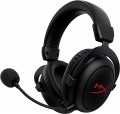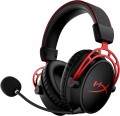Sound
The audio format supported by the headphones.
— Stereo. Two-channel sound that allows you to create a surround sound effect to a certain extent (due to the difference in the right and left channels). The design of the headphones (two speakers, one for each ear) was originally “sharpened” specifically for stereo, so the vast majority of models support this particular sound format.
— Mono. Single-channel sound that does not create a surround effect. This marking means that this model is equipped with
one earpiece ; At the same time, there are two types of such devices on the market. The first is headphones that initially have only one cup and are designed for situations where the second ear needs to be left open (for example, to work on the phone in the office). The second is true wireless devices (see Cable Type), sold singly to replace a lost earphone from the original pair.
— 5.1. Originally, 5.1 was designed to create surround sound that can come from any direction ("surround"). It assumes the presence of 5 main channels (centre, front left / right, rear left / right) and one bass. In headphones, the effect of this sound is achieved through the use of several speakers in each cup. Such models are very convenient when watching movies with multi-channel sound, as well as in games — they provide a powerful immersive effect. On the other hand, such headphones are not cheap, and besides, they require a specifi
...c connection method (for example, via USB).
— 5.1 (virtual). Models with support for 5.1 surround sound (see above), in which the surround effect is achieved not due to the number of speakers, but due to special sound processing technologies. This somewhat reduces the accuracy compared to the "non-virtual" multi-channel, but it can significantly reduce the cost and weight of the headphones. However, there can also be several speakers in such models — for example, for separation by frequency.
— 7.1. The 7.1 format is the multi-channel 5.1 described above, supplemented by two more main channels. The localization of these channels depends on the specific variety of 7.1, but anyway they enhance the effect of volume. On the other hand, full support for this format significantly affects the dimensions, weight and price of the headphones, and content with 7.1 sound is produced much less than 5.1.
— 7.1 (virtual). A “virtual” version of the 7.1 format described above, in which the effect of surround sound is provided primarily through special signal processing, and not due to the presence of separate emitters for each channel. Similar to virtual 5.1, this format of operation somewhat reduces the reliability of the sound, but this difference is often imperceptible, and the headphones themselves turn out to be simpler and more inexpensive. Therefore, most modern 7.1 models support the virtual format of this sound.
— 9.1 (virtual). Further development of the idea of multi-channel sound: 5 channels, as in 5.1 (see above), supplemented by 4 more channels for more accurate localization of audible sound. As in other virtual formats, volume in this case is provided by special processing algorithms.
It is worth remembering that the actual sound will depend not only on the headphones, but also on the signal source: for example, a mono recording even in 9.1 “ears” will not become voluminous.
— 3D sound. Surround sound with the localization of sound sources in three-dimensional space allows you to deeply plunge into the atmosphere of films or immerse yourself in a virtual game world. The mechanics of spatial 3D-sound provides localization of sound sources around the listener and in the vertical scan plane. Algorithms for implementing 3D sound in headphones differ in terms of software and hardware support, but all of them are aimed at achieving the effect of realism of what is happening. Surround sound has long been the standard for movies, and in recent years, 3D sound has become increasingly common in games and music tracks.Frequency range
The range of sound frequencies that headphones can reproduce.
The
wider this range, the more fully the headphones reproduce the spectrum of sound frequencies, the lower the likelihood that too low or too high frequencies will be inaccessible. However, there are some nuances to consider here. First of all, let us remind you that the perceptual range of the human ear is on average from 16 Hz to 22 kHz, and for the complete picture it is enough for headphones to cover this range. However, modern models can significantly exceed these boundaries: in many devices the lower threshold
does not exceed 15 Hz, or even
10 Hz, and the upper limit can reach
25 kHz,
30 kHz and even
more. Such wide ranges in themselves do not provide practical advantages, but they usually indicate a high class of headphones, and are sometimes given only for advertising purposes.
The second important point is that a wide frequency range in itself is not a guarantee of good sound: sound quality also depends on a number of parameters, primarily the amplitude-frequency response of the headphones.
Sensitivity
Rated headphone sensitivity. Technically, this is the volume at which they sound when a certain standard signal from the amplifier is connected to them. Thus, sensitivity is one of the parameters that determine the overall volume of the headphones: the higher it is, the louder the sound will be with the same input signal level and other things being equal. However, we must not forget that the volume level also depends on the resistance (impedance, see above); moreover, it is worth choosing “ears” for a specific device first by impedance, and only then by sensitivity. In this case, one parameter can be compensated for by another: for example, a model with high resistance and high sensitivity can work even on a relatively weak amplifier.
As for specific figures, headphones with indicators of 100 dB or less are designed mainly for use in a quiet environment (in some similar models, the sensitivity
does not exceed 90 dB). For use on the street, in transport and other similar conditions, it is desirable to have more sensitive headphones — about
101 – 105 dB, or even
110 dB. And in some models, this figure can reach
116 – 120 dB. and even
more.
It is also worth noting that this parameter is relevant only for a wired connection according to the analogue standard — for example, via a 3.5 mm mini-
...jack. When using digital interfaces like USB and wireless channels like Bluetooth, the sound is processed in the built-in headphone converter, and if you plan to mainly use this kind of application, you can not pay much attention to sensitivity.Speaker size
The diameter of the speaker installed in the headphones; models with multiple drivers (see "Number of drivers"), usually, the size of the largest speaker is taken into account, other dimensions can be specified in the notes.
In general, this parameter is relevant primarily for over-ear headphones (see "Design"). In them, emitters can have different sizes; the larger it is, the more saturated the sound is and the better the speaker reproduces the bass, however, large emitters have a corresponding effect on the dimensions, weight and price of the headphones. But in-ear "ears" and earbuds, by definition, have very small speakers, and rich bass in them is achieved due to other design features.
Harmonic distortion coefficient
The coefficient of harmonic distortion produced by this model of headphones.
This parameter determines the amount of non-linear distortion introduced by the headphones into the reproduced sound. The lower it is, the less such distortions, the cleaner and closer to the original sound is. So, an indicator of 1% or more can be considered tolerable at best, from 0.5% to 1% — good, less than 0.5% — excellent (such indicators are acceptable even for monitor headphones), and less than 0.1% — almost perfect.
Note that a low harmonic coefficient in itself does not guarantee high-quality sound — a lot depends on other features of the headphones, primarily the frequency response.
Flexible design
This feature usually means that the microphone is attached to the headphones using a special flexible arm.
The flexible design gives additional possibilities for moving the microphone relative to the user's mouth and makes it easier to choose the optimal position that provides the best sound quality.
Charging time
The time required to fully charge the battery in properly powered headphones (see above).
In this case, we mean the battery charging time from 0 to 100% when using a standard charger (or a third-party charger with identical characteristics). Accordingly, in fact, this indicator may differ from the claimed one, depending on the specifics of the situation. However, in general, it is quite possible to evaluate different models and compare them with each other: headphones with a shorter claimed charging time will in fact charge faster (ceteris paribus).
Also note that an increase in battery capacity (and headphone battery life) inevitably implies an increase in charging time. To compensate for this moment, special fast charging technologies can be used — however, they affect the cost and require the use of specialized charger.
Operating time (music)
The declared operating time of headphones with autonomous power supply (see above) when listening to music on a single battery charge or a set of batteries.
As a rule, the characteristics indicate a certain average operating time in music listening mode, for standard conditions; in practice, it will depend on the intensity of use, volume level and other operating parameters, and in models with replaceable batteries - also on the quality of specific batteries. However, based on the stated time, you can fairly reliably assess the autonomy of the selected headphones and compare them with other models. As for specific values, relatively “short-lived” devices have a battery life
of up to 8 hours, a figure of
8 – 12 hours can be called quite good,
12 – 20 hours – very good, and in the most “long-lasting” headphones the operating time can
exceed 20 hours.
Weight
The total weight of the headphones; for true wireless models (see "Cable Type"), the weight of each individual earbud is listed.
This parameter is directly related to the design (see above) and some features of the functionality. Thus, the mentioned true wireless devices are very light, their weight
does not exceed 25 g. More traditional in-ears and in-ears can be noticeably heavier,
up to 50g for in-ears and up
to 100g for most in-ears. Overhead models, for the most part, are quite massive: among them there are many models weighing
200 – 250 g,
250 – 300 g and even
more than 300 g. It should be noted that a significant weight for false ears is often not a disadvantage, but an advantage: it allows them to stay on the head more securely, creates an impression of solidity and reliability, and most often does not create significant inconvenience.

